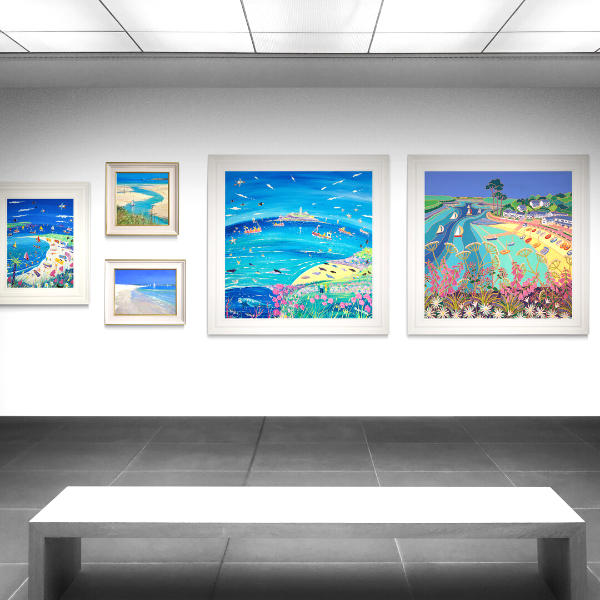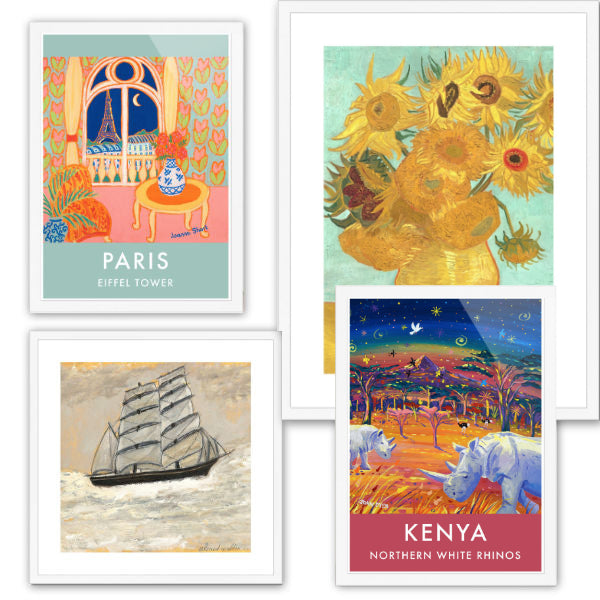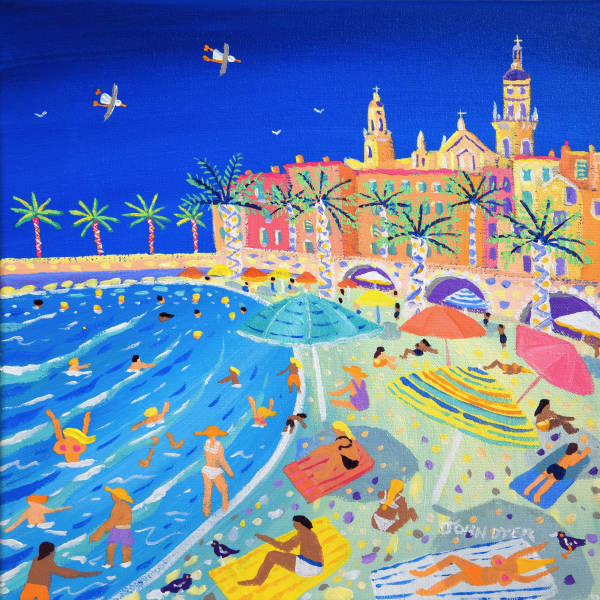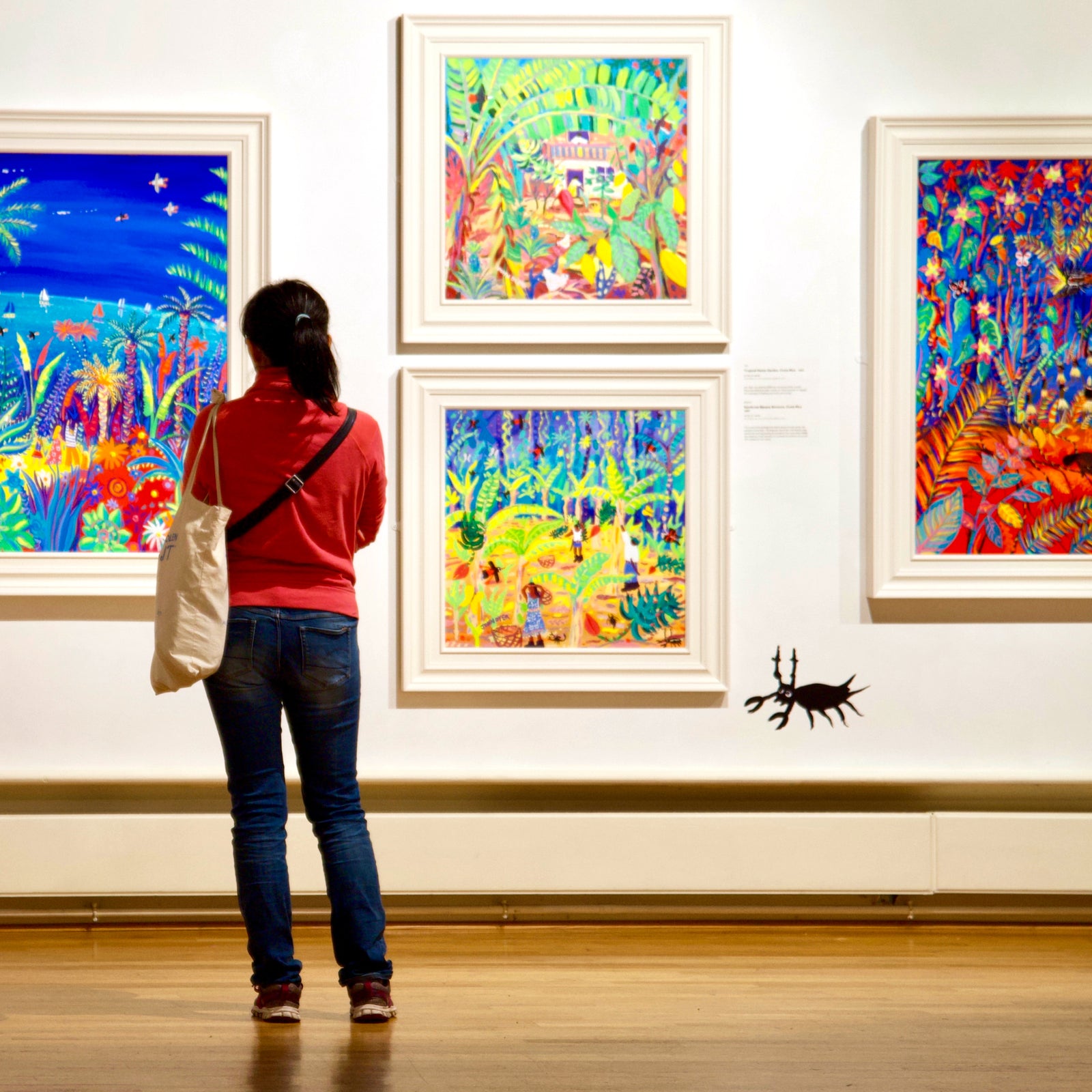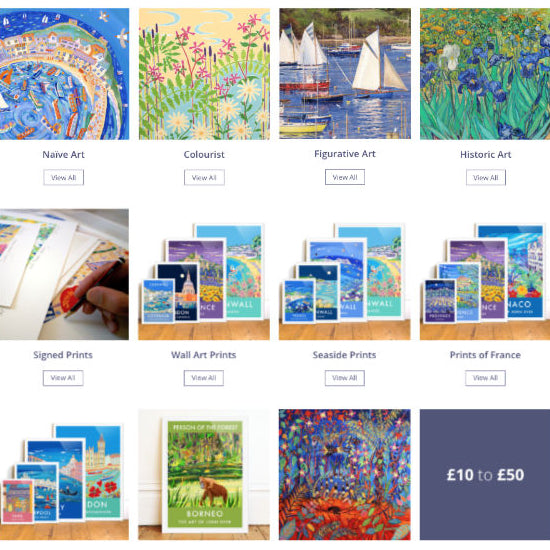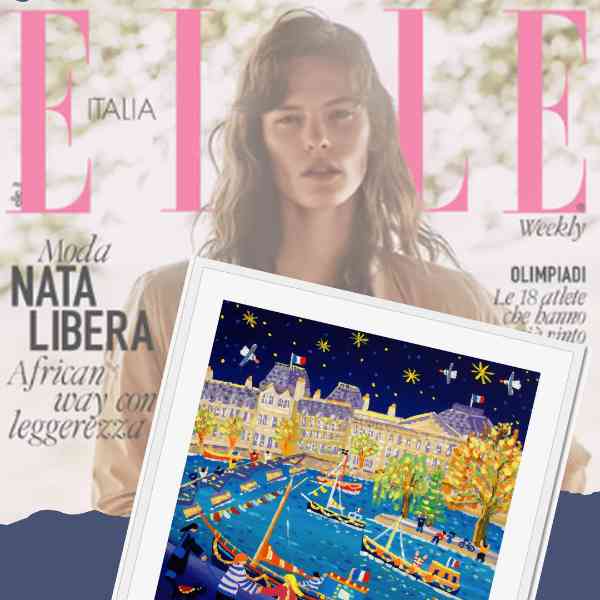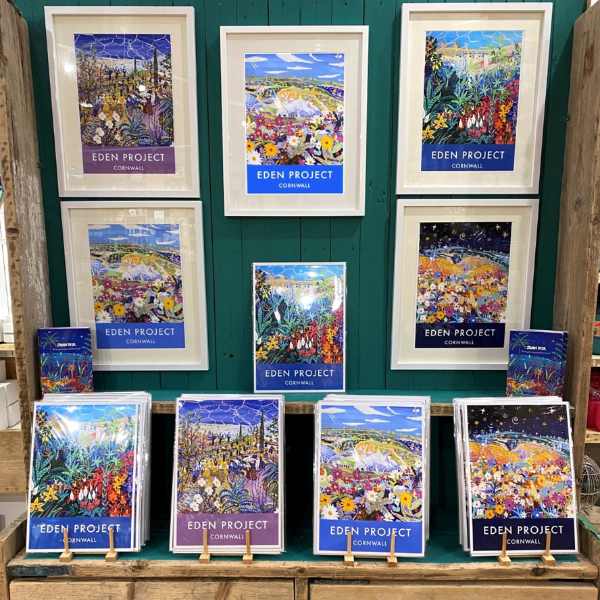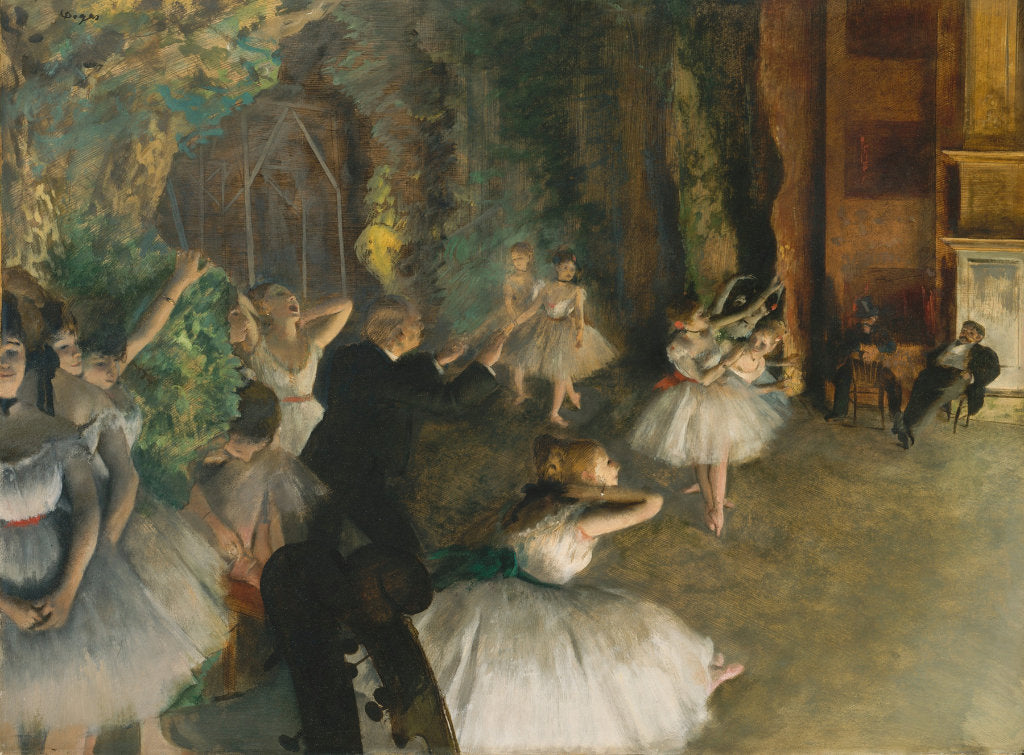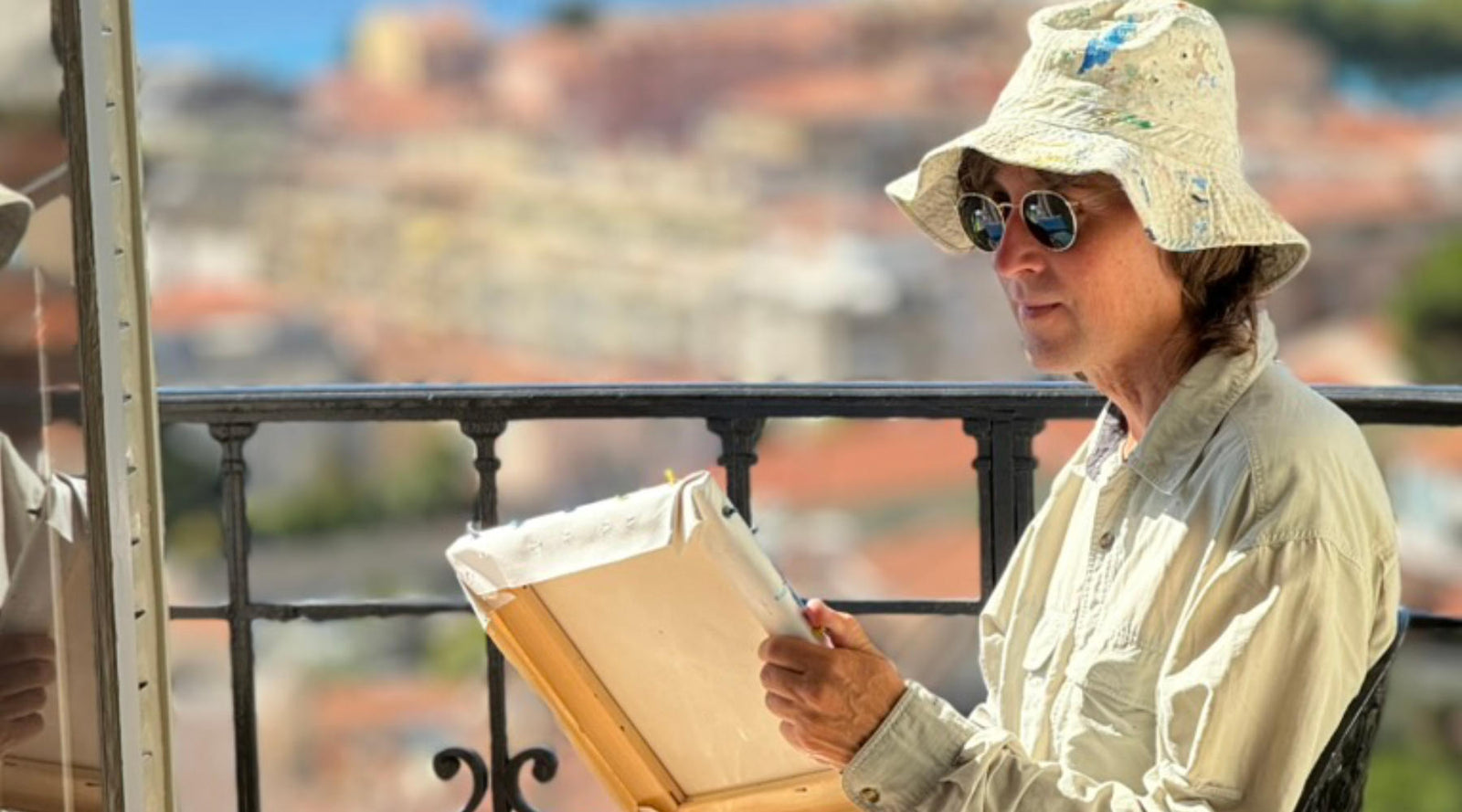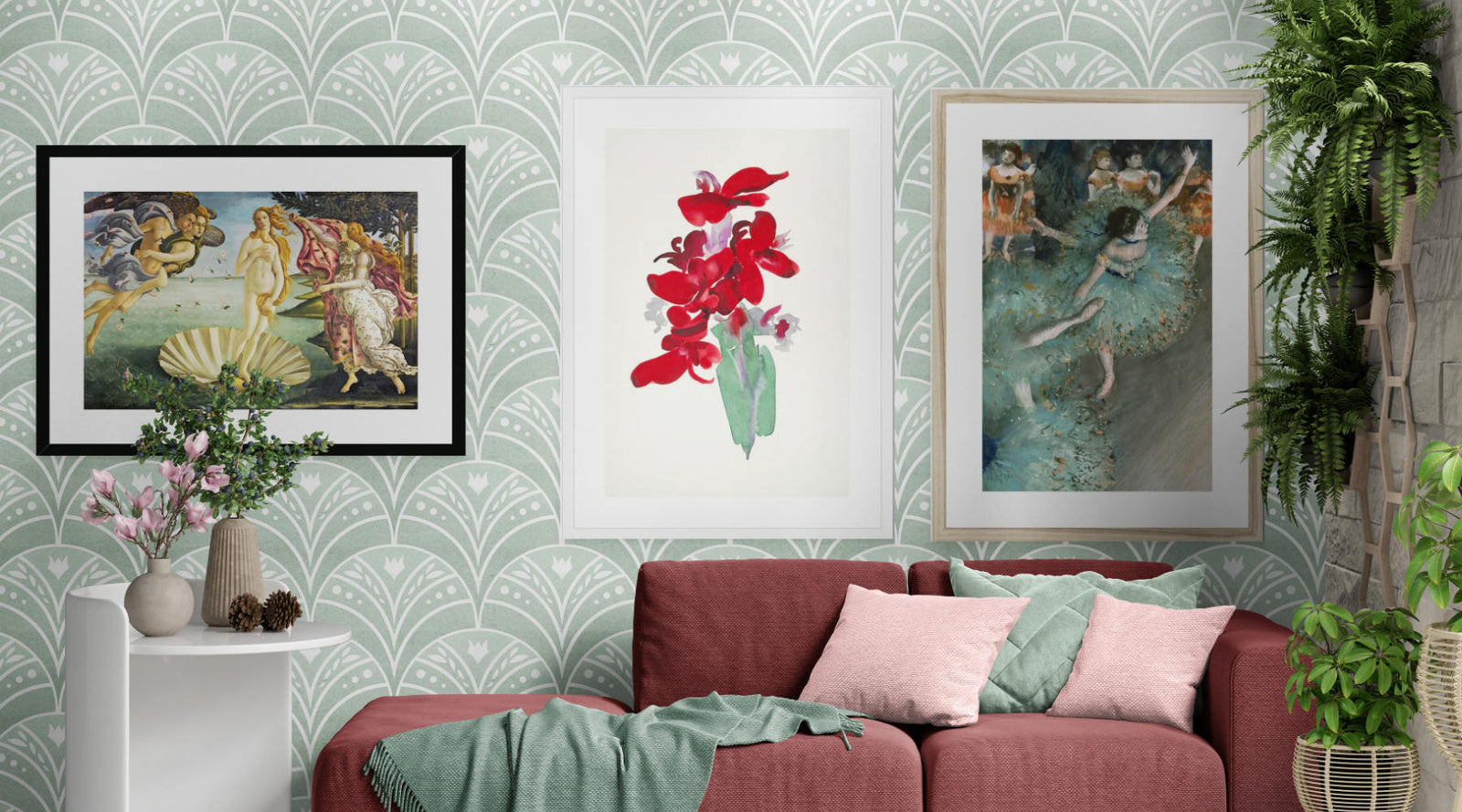
Above: A selection of framed art prints by famous paintings available to buy on The John Dyer Gallery. Explore the famous paintings print collection now.
Why do the most famous paintings of famous painters like Da Vinci and Van Gogh achieve such timeless acclaim? This guide unearths the creative prowess and historical impact that elevate these iconic works to global fame. From the intriguing depths of the Mona Lisa to the vibrant swirls of Starry Night, discover art history’s unforgettable icons with no fluff—just facts that fascinate.
Buy Art Prints of Famous Paintings Online
Key Takeaways
-
The Mona Lisa’s enigmatic smile and pioneering painting techniques by Leonardo da Vinci set new standards for portraiture and continue to inspire from its home in the Louvre Museum.
-
Van Gogh’s Starry Night paints a dynamic, contrasting night sky using impressionist brushstrokes and colours, challenging traditional nocturnes and residing at New York’s Museum of Modern Art.
The Enigma of Mona Lisa by Leonardo da Vinci
Above: Leonardo da Vinci Framed Open Edition Art Print. 'Mona Lisa' for sale at The John Dyer Gallery
A journey through the realm of art would be incomplete without encountering Leonardo da Vinci’s most renowned painting, the Mona Lisa (painted between 1503 and 1519). The enigma of Mona Lisa’s smile, a harmonious union of humanity and nature, has captivated the world for centuries. The identity of the Mona Lisa has been the subject of debate, with theories suggesting that she could be Lisa del Giocondo, Leonardo’s mother, or even a self-portrait allegory. The Mona Lisa’s direct gaze was a striking divergence from other portraiture conventions of the time.Leonardo’s mastery of the sfumato painting technique is evident in the Mona Lisa, creating a captivating effect with imperceptible transitions between light and shadow. The realism and depth in the painting are a testament to Leonardo’s scientific study and mathematical approach to perspective and sizing. Intricate details, including the veil, hair, and layers of transparent colour on the skin, demonstrate Leonardo’s skill in creating a lifelike and glowing depiction.

Above: Photographing the Mona Lisa, in The Louvres, Paris
The Mona Lisa’s influential portrayal set new standards for portrait painting, echoing from the Italian Renaissance to contemporary art. This famous painting, among the most famous paintings of all time, is now housed in the Louvre Museum in Paris, France, standing as a testament to Leonardo da Vinci’s genius and considered his ultimate masterpiece. In the realm of paintings of all time, the Mona Lisa continues to captivate and inspire.
The Starry Night: Vincent Van Gogh's Celestial Masterpiece
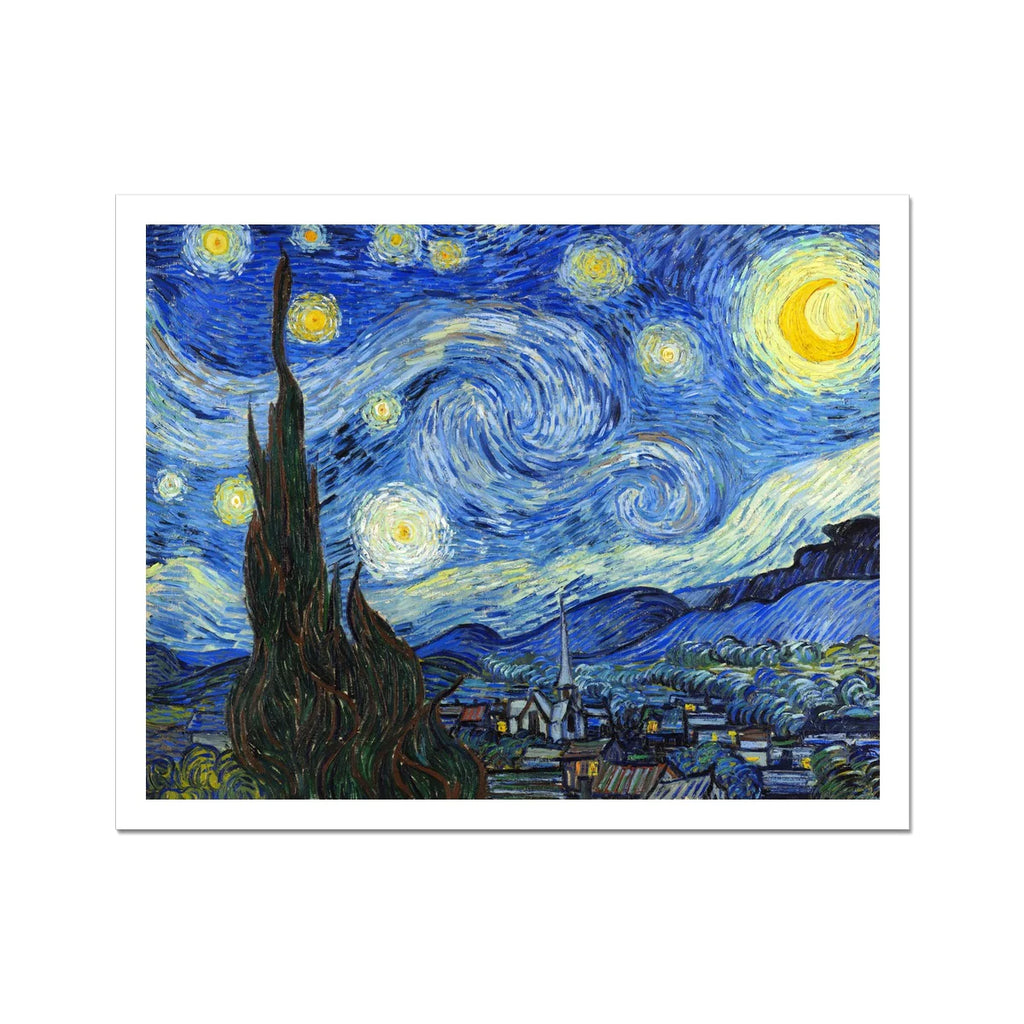
Above: 'Starry Night' by Vincent Van Gogh. Open Edition Fine Art Print
Venturing beyond the enigmatic smile of the Mona Lisa, we immerse ourselves under the celestial canopy of 'Starry Night' oil painting by Vincent Van Gogh. As we explore the works of these famous painters, this painting balances realism and abstraction, attributable to van Gogh’s use of contrasting colours and the orientation of lines. The use of vibrant blues and yellows creates a rich night sky, interspersed with light greens to enhance the sense of movement. The dynamic sky over the tranquil village invokes a sense of life and activity beyond the human perspective.
Van Gogh’s depiction of light and colour in the darkness conveys an extraordinary sensitivity and creative imagination. The painting Starry Night, is known for:
-
Its dramatic contrasts, achieved through swirling brushstrokes and thick textures from the impasto technique
-
Being painted in 1889
-
Being a global icon and the only nocturnal piece in a series focused on similar subjects.
The painting’s innovative representation of night challenges traditional nocturnes, heralding abstract and expressionist movements within the art world. Its beauty continues to captivate the emotions of diverse audiences with its technical and emotional depth. Today, Starry Night resides in permanent collection at the Museum of Modern Art in New York, where it continues to influence and inspire.
The Birth of Venus: Botticelli's Timeless Beauty
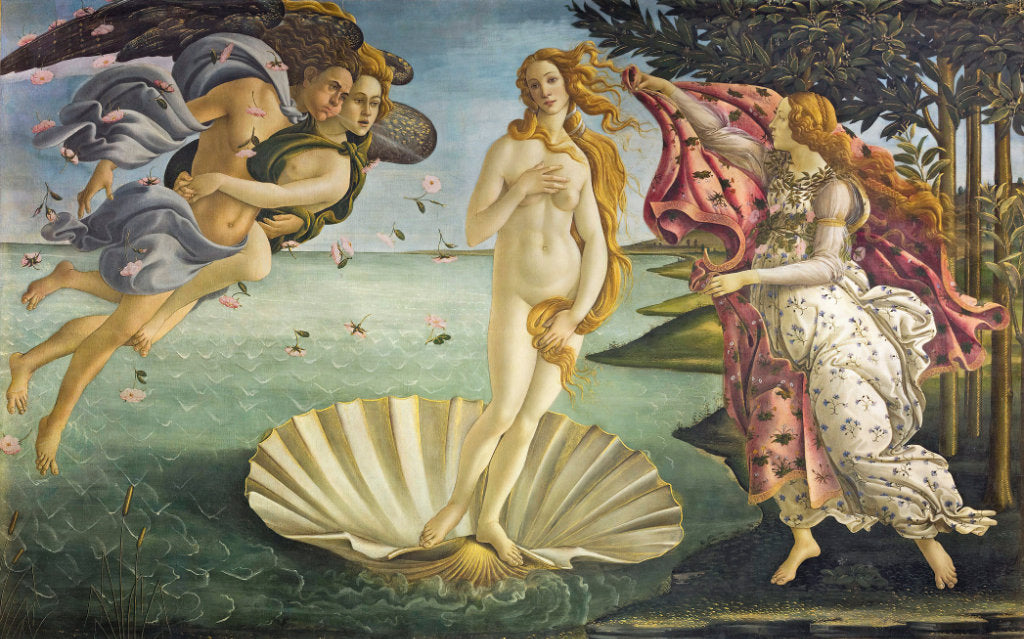
Above: 'Birth of Venus' by Sandro Botticelli, 1486 Buy art print online
Leaving the celestial spectacle of the Starry Night behind, we are greeted by divine beauty in Botticelli’s 'The Birth of Venus'. This painting depicts the goddess of love and beauty, Venus, emerging from the sea onto land on the island of Cyprus inside a shell, symbolizing her birth and purity. In the painting, Venus is greeted by a figure who may represent a Grace or the Hora of spring, extending a flower-covered cloak to her, while roses blown in by the winds underscore the themes of spring, birth, and renewal.
Botticelli was inspired by classic art, recreating Venus’ modest pose from ancient statues and the image of the Winds from an ancient Hellenistic gem, presenting Renaissance artworks with composition and forms reminiscent of the classical era. The choice of canvas as the painting’s medium was a common practice in the 15th century for decorative artworks designed for noble houses, adding to its historic and aesthetic significance in the realm of western art.
A member of the Medici family likely commissioned 'The Birth of Venus', as suggested by elements such as the presence of orange trees, a Medici symbol, tying the artwork to Florence’s influential rulers during the Renaissance. Today, 'The Birth of Venus' resides in the Uffizi Gallery in Florence, Italy, where it continues to be admired as a pivotal representation of Renaissance ideals of love and beauty.
Claude Monet: The Father of Impressionism
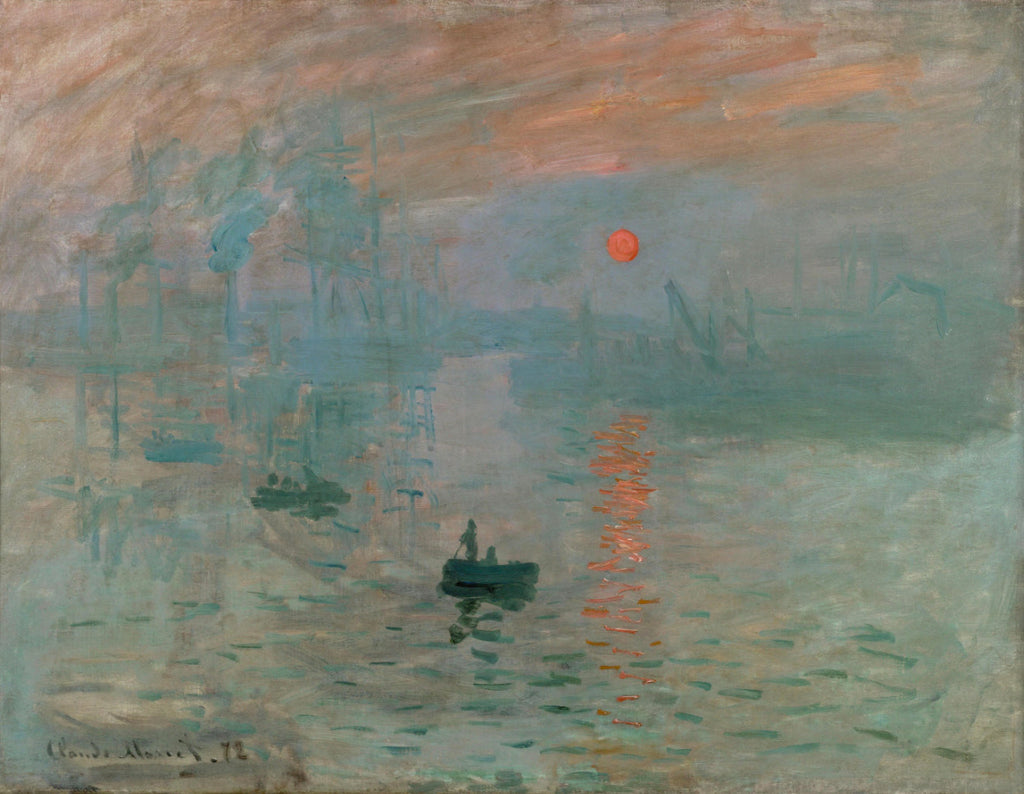
Above: 'Impression, Sunrise' by Claude Monet
Leaving the divine beauty of Venus, we embrace the world of Claude Monet, a prominent French painter and the Father of Impressionism. Monet’s painting 'Impression, Sunrise' gave the name to the Impressionist style of art, marking his significant contribution to the movement. Showcased in the First Impressionist Exhibition in 1874 in Paris, 'Impression, Sunrise' reflects a key moment in art history. The term ‘Impressionist’ itself originated from a derogatory remark about this particular painting of Monet’s, illustrating the initially negative reception of this groundbreaking style.
Monet’s work, is known for its sketchy technique and use of light colours and visible canvas, which represents the essence of the Impressionist movement to capture the transient effects of light and atmosphere. Monet started his concept of ‘series’ paintings in the 1880s with his Haystacks series, capturing different atmospheric conditions and times of day, which was a revolutionary approach to observing light changes.
Above: 'Water Lilies and Japanese Bridge' by Claude Monet. Giverny Garden. Open Edition Fine Art Print
The gardens at Giverny, where Monet resided from 1883, and its ponds and water lilies became enduring subjects in his works and are among his most famous pieces. His property in Giverny allowed him the space to construct a greenhouse and a second well-lit studio, facilitating his devotion to painting his beloved garden scenes.
Above: 'Water Lilies' by Claude Monet. Giverny Garden Open Edition Fine Art Print available for sale at The John Dyer Gallery
Edgar Degas: Capturing Movement and Grace
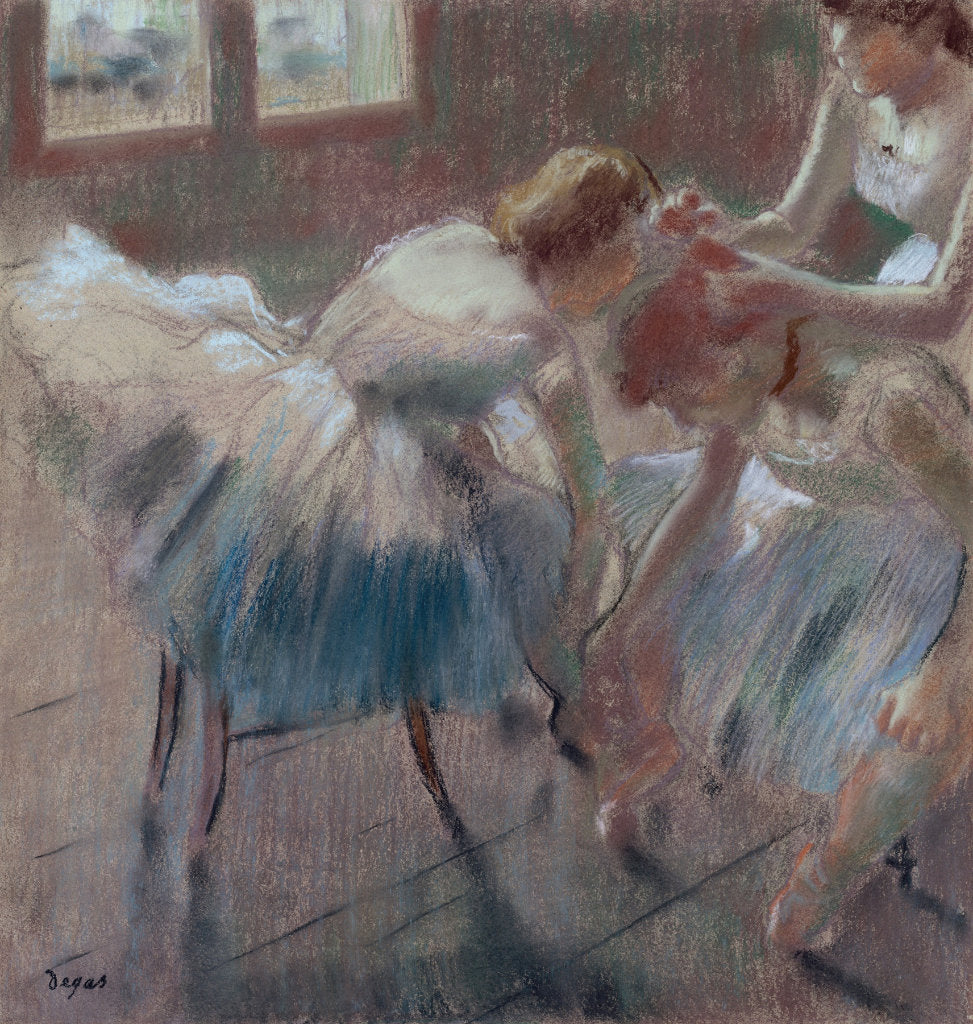
Above: 'Three Dancers preparing for Class' (after 1878) by Edgar Degas (French, 1834-1917). Buy art prints online.
Moving beyond Monet’s vibrant landscapes, we are welcomed into french artist Edgar Degas’s graceful depiction of the ballet world. Degas utilized a variety of techniques to capture movement in his art, such as pastels, monotypes, and sculpture.
Degas’s ballet paintings often depicted dancers in candid, behind-the-scenes moments in a less glamorized and more realistic view of ballet.
Above: ‘The Rehearsal of the Ballet Onstage’ by Edgar Degas (1878). Buy framed art print online.
Works like ‘The Rehearsal of the Ballet Onstage’ conveyed the power dynamics inherent in the ballet world through strategic composition and figure placement. The voyeuristic nature of performances was a theme in paintings such as ‘Ballet,’ where male audience figures suggested an underlying exploitation narrative.
Above: 'Swaying Dancer (Dancer in Green)' by Edgar Degas. Buy art prints online.
Pablo Picasso: Breaking Boundaries with Cubism
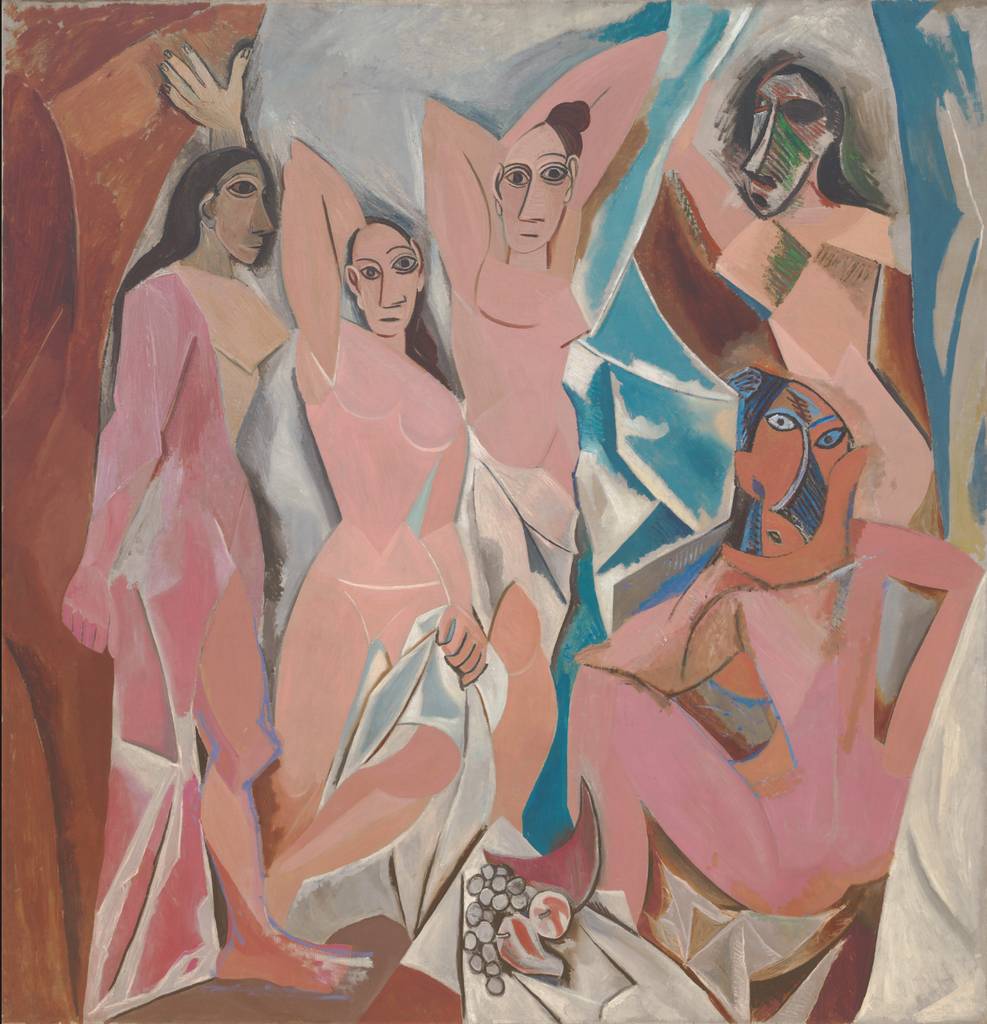
Above: Pablo Picasso, Les Demoiselles d'Avignon, Paris, June-July 1907, courtesy of MOMA New York
Moving from the graceful ballet world, we delve into the world of geometric abstraction, exploring Picasso’s groundbreaking impact on Cubism. Picasso’s painting Les Demoiselles d’Avignon initiated the radical shift towards Cubism, presenting angular bodies influenced by African masks and Iberian sculpture. Guernica, a poignant response to the bombing of a Spanish town, embodies the emotional and political depth that Cubism could convey in Picasso’s art.
Cubism broke from traditional European representation of space and depth, as showcased in works like:
-
Girl with a Mandolin, which presented fragmented subjects from multiple perspectives
-
Still-Life with Chair Caning, which used collage techniques
-
Girl Before a Mirror, which sustained Cubism’s influence into the 1930s.

Above: 'Bass' by Georges Braque (1911) (French, 1882 – 1963)
The term ‘Cubism’ itself originated from a critic’s remark about the geometric nature of Georges Braque’s works, reflecting the early public perception of the movement. Cubism’s significance extends beyond painting, opening up new possibilities for visual reality in art and influencing later styles like constructivism and neo-plasticism.
Frida Kahlo: A Portrait of Strength and Resilience
Stepping away from Picasso’s abstract world, we immerse ourselves in Frida Kahlo’s deeply personal and symbolic universe. Through her art, Kahlo channelled her physical and emotional suffering into vibrant colours and a distinctive folk style, resulting in oil paintings that are deeply personal and rich with fantasy elements. The self-portrait with a leather corset depicts the contrast between peace and chaos in Kahlo’s life, with symbolic Marxist hands suggesting hope for healing from her pain.
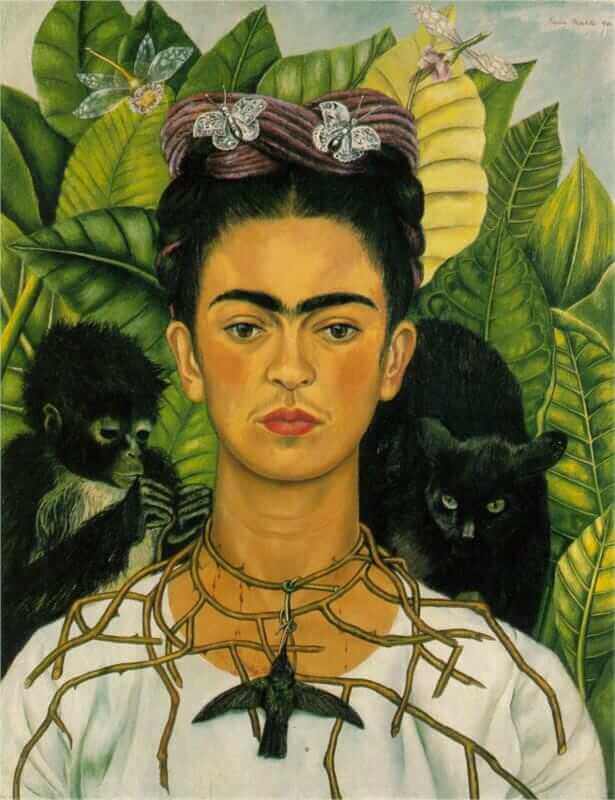
Above: Self-Portrait with Thorny Necklace, 1940 by Frida Kahlo.
Kahlo’s artwork, particularly her self-portraits, often included politically charged symbols that reflected her commitment to political causes and the Mexican Revolution. Her belief in Marxism informed her utopian vision that political change could offer freedom from suffering and pain. In her self-portraits, Frida Kahlo boldly addressed controversial societal issues such as identity, post-colonialism, and class, showcasing her progressive outlook and challenging the status quo.
Kahlo depicted herself in a manner that defied traditional expectations of femininity, frequently wearing androgynous or traditionally male clothes and adopting a contemplative and introspective expression in her self-portraits. Symbolism was a crucial element in Kahlo’s self-portraits, exemplified by creatures like monkeys, which she used to convey a sense of protection and tenderness, distinguishing her interpretation from their common mythological connotations.
Salvador Dalí: Surrealism and the Persistence of Memory
Leaving behind the personal struggles of Frida Kahlo, we plunge into Salvador Dalí’s surreal universe. Dalí was deeply influenced by Freudian psychology, which he encountered through Sigmund Freud’s analytical texts on the human mind, dreams, sexuality, and the subconscious. Freud’s seminal work, The Interpretation of Dreams, deeply inspired Dalí, compelling him to integrate dream-like and subconscious imagery into his artwork.
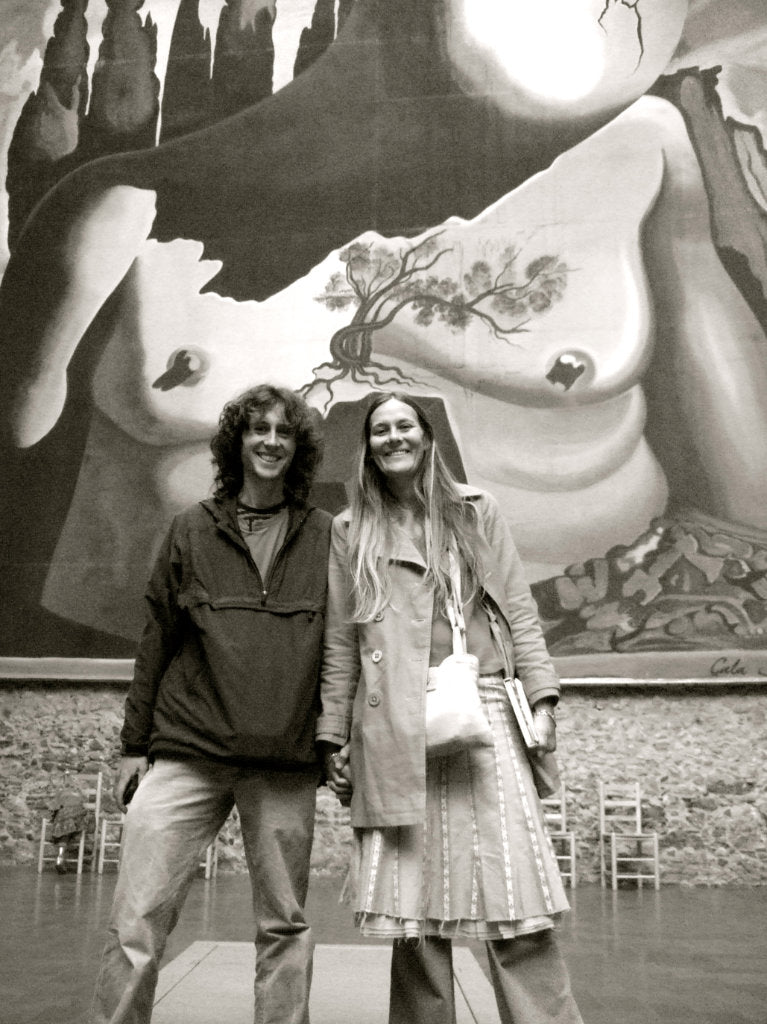
Above: Artists John Dyer and Joanne Short at The Salvador Dali Museum, Figueres, Spain
The Persistence of Memory, crafted in 1931, is a manifestation of the central Surrealist ethos, embodying the mysterious allure of dream states, the enigma of time, and the obscurities of modern life and mortality. In the painting, the softness of the melting watches against the Catalonia landscape conveys the Surrealist intent to distort and challenge the viewer’s perception of reality.

Above: Salvador Dalí, 'The Persistence of Memory' (1931), courtesy of MOMA, © 2024 Salvador Dalí, Gala-Salvador DalíCourtesy: Foundation / Artists Rights Society (ARS), New York
Dalí employed his unique paranoiac-critical method for The Persistence of Memory, allowing him to systematize his delirious thoughts, reflected by the hallucinatory visuals of warped timepieces. Ants on the orange watch symbolize decay and inevitability, alongside the faceless creature that signifies the subconscious realm or possibly Dalí himself. The Persistence of Memory has become an emblem of Dalí’s role in the Surrealist movement, continuing to mesmerize and puzzle viewers with its esoteric and evocative imagery.
Georgia O'Keeffe: The Mother of American Modernism (American, 1887-1986)
Leaving behind Dalí’s surreal landscapes, we delve into the works of Georgia O’Keeffe, the Mother of American Modernism. O’Keeffe created around 200 large-scale, close-up flower paintings out of more than 2,000 works during her career. Her unique technique involved examining flowers from various perspectives and progressively simplifying them, aiming to make observers see the natural beauty they often overlook.
Above: 'Red Canna' (1915) Georgia O'Keeffe. Buy as a fine art print online.
Influenced by modernist photography, her magnified natural forms represented powerful graphic images that achieved unprecedented acceptance in the fine art world, as seen in her Tate Modern retrospective. The record-breaking sale of O’Keeffe’s Jimson Weed for $44.4 million highlights the historical significance and continued appreciation for her contributions to American modernism.
Jackson Pollock: Action Painting and Abstract Expressionism

Above: Jackson Pollock. One: Number 31, 1950. Oil and enamel paint on canvas, courtesy of MOMA, New York. © 2022 Pollock-Krasner Foundation/Artists Rights Society (ARS), New York, Sidney and Harriet Janis Collection Fund (by exchange). Conservation was made possible by the Bank of America Art Conservation Project
Moving beyond O’Keeffe’s floral magnificence, we delve into the dynamic energy of Jackson Pollock’s abstract masterpieces. Pollock was a leading figure in the action painting branch of Abstract Expressionism, characterized by expressive brush strokes and the impression of spontaneity. His innovative technique involved laying unstretched fabric on the floor and using sticks stiffened brushes or directly pouring from the can to apply the paint, moving away from traditional brushwork on a primed canvas.
Pollock’s drip paintings are known for:
-
Their complex interplay of colours
-
Their vigour and spontaneity
-
A clear evolution in his methods and material choices, transitioning from high-quality tube paints to synthetic resin-based paints
-
The performative aspect of Pollock’s painting, which involved dynamic, dance-like movements around the canvas
These elements were integral to the action-packed and energetic nature of his abstract masterpieces in the realm of fine arts.
Andy Warhol: Pop Art and the Power of Celebrity

Above: Andy Warhol. Campbell’s Soup Cans, 1962. courtesy of MOMA, New York © 2024 Andy Warhol Foundation/ ARS, NY / TM Licensed by Campbell's Soup Co. All rights reserved
Venturing away from Pollock’s dynamic energy, we immerse ourselves in the Pop Art world with Andy Warhol. Warhol was a significant figure in the Pop Art movement, gaining fame with his Campbell’s Soup Cans series. The Campbell’s Soup Cans is a commentary on mass production and consumerism, featuring repeated, nearly identical soup can images.
Warhol later transitioned from painting to silkscreen printing for reproduction alignment with Pop Art. Initial confusion and criticism gave way to adulation for the Campbell’s Soup Cans, with their acceptance into esteemed art collections like The Museum of Modern Art.
Warhol’s work extended to celebrity culture, capturing the likenesses of figures like Marilyn Monroe and Mick Jagger and furthering the amalgamation of fine art and commercial imagery. As one of the famous artists, Warhol’s legacy is cemented through the Andy Warhol Foundation and the Andy Warhol Museum, promoting the visual arts.
Famous Modern Cornish Artists
Above: Alfred Wallis Framed Open Edition Cornish Art Print. 'Sailing Ship in a Stormy Sea'
After the Second World War, a vibrant art scene in Cornwall was brought to life by contemporary Cornish artists. These artists, such as Ben Nicholson and Christopher Wood, followed closely behind by Barbara Hepworth, and a younger group of artists like Peter Lanyon, John Wells, and Tony Frost, have made significant contributions to modern art, with their works reflecting a unique blend of traditional Cornish influences and innovative, contemporary techniques.
Their art has played a pivotal role in shaping the vibrant cultural artistic landscape of Cornwall and helping create the Tate Gallery St Ives, forging a distinctive identity that sets them apart in the global art scene and making the art gallery and art institute a must-visit destination for art historians and art lovers alike.
This continues to this day, and the work by our artists at The John Dyer Gallery. John Dyer, Joanne Short and Ted Dyer, all have a distinct style of their own, pushing the boundaries and forging the way to keep Cornish art unique and collectable.
Summary
As we conclude our journey through art history, it’s evident that art is not just a visual delight but a powerful narrative medium that transcends time and space. From the enigmatic smile of Mona Lisa to the celestial spectacle of Starry Night, the timeless beauty of The Birth of Venus to the vibrant landscapes of Monet, each painting carries a unique story, an imprint of the artist’s soul. The strength and resilience of Frida Kahlo, the surreal worlds of Salvador Dalí, the magnified beauty in Georgia O’Keeffe’s works, and the dynamic energy of Pollock’s action painting – all contribute to the rich tapestry of art history.
The fusion of fine art and commercial imagery in Warhol’s Pop Art and the contributions of contemporary Cornish artists reflect the continuous evolution and diversity of art styles. The exploration of these 50 famous paintings offers a glimpse into the creative minds of renowned painters, their innovative techniques, and the profound impact they have had on the art world and beyond.
Art has the power to evoke emotions, provoke thought, challenge norms, and inspire change. It is a universal language that speaks to the heart and the mind, fostering a deeper understanding of ourselves and the world around us. As we appreciate these masterpieces, we are reminded of the enduring power of creativity and the human spirit’s capacity to express itself in myriad and beautiful ways.
Start your Famous Paintings Collection with our Historic Art Prints
Frequently Asked Questions
What is the No 1 famous painting in the world?
The most famous painting in the world is the Mona Lisa, created by Leonardo da Vinci at the start of the 16th century and valued at well over $660 million. It receives around 10 million visitors per year.
Who is the most famous painter ever?
The most famous painter ever is widely recognised as Leonardo da Vinci, the genius behind the iconic Mona Lisa painting masterpiece.
Who was the artist behind the famous painting, 'The Mona Lisa'?
The artist behind the famous painting "The Mona Lisa" was the renowned Italian artist, Leonardo da Vinci.
Who was the anonymous street artist known for his thought-provoking urban installations?
The anonymous street artist known for his thought-provoking urban installations is Banksy.




